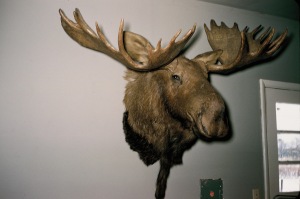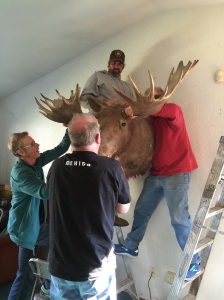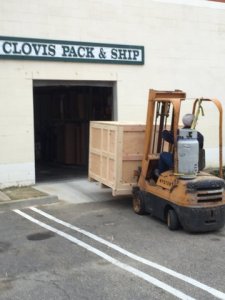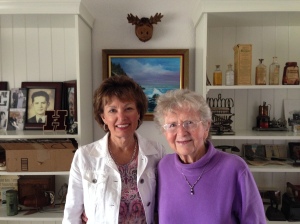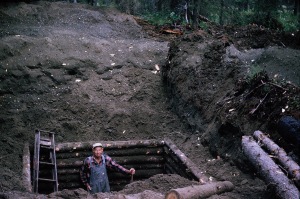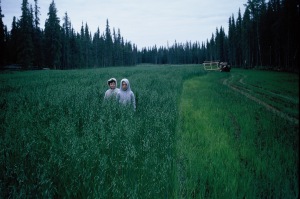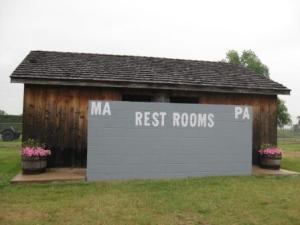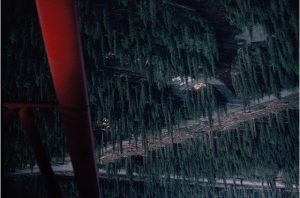Earthquakes in Alaska from January 1 to November 30, 2018
43,959
Alaska Earthquake, November 30, 2018
7.0 on the Richter scale
“This is the largest earthquake to strike near Anchorage since the 2016 M7.1 Iniskin earthquake. Because the quake was so much closer, the impacts to Anchorage and Mat-Su were far more severe and widespread.” .” http://www.earthquake.alaska.edu
Alaska Earthquake, March 27, 1964
9.2 on the Richter scale, the strongest earthquake recorded in North America.
Of the 10 largest U.S. earthquakes, 7 have taken place in Alaska.
Alaska has 52 percent of all earthquakes in the United States.
“The Day the Earth Fell Apart”
(adapted from Alaska Bush Pilot Doctor– as told by my father, Dr. Elmer Gaede)
THERE were no pressing medical needs on this Good Friday holiday, so Dr. Isaak and I decided not to hold clinic. Instead, I was working in the back woods of the homestead. It was a sloppy time of year when snow melted, yet the ground was frozen, resulting in mud during the day, and icy conditions at night and the early mornings. “Breakup,” we called it.
“Elmer!”
I looked up and saw Ruby coming toward me, trying to walk around the waterways in her black knee-high rubber boots.
“One of your O.B.s is on the phone.”
Within a few minutes of telephone conversation, Mrs. Smith gave me an experienced progress report on her condition. This was not her first baby, so without hesitation I told her I’d meet her at the clinic.
I changed my work clothes, singed from winter brush fire burning, and headed out the door to the Volkswagen bus.
“If this is the real thing, I won’t be back for supper,” I called to Ruby.
The VW skated on the water‑on‑ice Gas Well, to Kalifonsky Beach Road that met the Sterling Highway, and across the bridge that spanned the Kenai River. The bridge was the only one crossing the Kenai River and connected the lower Kenai Peninsula towns with the main part of the Peninsula.
Mrs. Smith met me in the clinic parking lot and took her muddy boots off at the door. She’d driven herself to. Chances were her husband was in the oilfield and a friend was home watching her other children.
She shook her head and held her stomach. “I didn’t plan on having a baby at breakup when the roads are so bad.”
She lay down on the examining table, which would most likely turn into a delivery table. I began my evaluation. Blood pressure normal. Fetal heart rate normal. The baby’s head was low. I needed to call a nurse right away.
Abruptly the room swayed. I grasped the examining table to steady myself. Was I dizzy? I sat down on the nearby tall stool. The movement continued, now with a distant rumble and a stronger force. I looked at Mrs. Smith. Our puzzled eyes met. “Earthquake!”
“Let’s go!” I shouted above the din and helped her off the table. I held on to her arm and we careened down the hallway to the emergency ramp door, which I deemed most solid.
The shaking intensified. As we stood looking out the open door, I saw tall spruce and aspen trees whip violently back and forth until their tops nearly touched the ground. Like the sound of surf, the roar became deafening. The barn across the street jumped alive and gyrated on the convulsing ground. The ground heaved up and down like ocean waves and cars lurched crazily on the road. I’d been in earthquakes at Tanana, but never like this.
I stood horrified as a jagged crack appeared in front of a car. It opened about a foot wide and then suddenly clapped shut. The earth stretched apart and other fracture s appeared. The smell of sulfur filled the air. I was staggered by the force of nature. The thunderous rolling continued and the ground groaned in agony. Will it never end?I wondered. How long can this last before everything is broken apart or sucked into the earth?
After four never-ending minutes, the nightmare stopped – or so I thought. Silence.
“I’m going home,” said Mrs. Smith in a trembling voice. “I don’t want to have my baby right now.”
She walked into the empty waiting room, stepped into her boots, carefully made her way down the front steps and out the front door to her car.
Back in my office, the large clock on the wall, hung crookedly. I pushed back the furniture in the waiting room that had danced out of place, and then tried calling Ruby. The phone was dead. I needed to get home.
Just as I opened the front door a state trooper pushed in. The usually self-assured man, who dealt with terrible accidents and Alaska catastrophes, was wild-eyed and uncertain.
“Doc, you’ve got to stay!” his command sounded more like a plea. “Emergencies will be coming in!”
I’d never seen him so frantic and wondered what he knew that I didn’t. This put me in a bind between medical obligations and my concern as a father and husband. But, he’d given me no choice. I’d been ordered to stay at my post as a physician.
xxxxx
Later Ruby told me of her experience. She and the children were sitting at the supper table when they heard a loud thud and then felt a jolt, as though something large had run into the house. They figured out it was an earthquake t and expected it would subside – as earthquakes before had done. When the shaking and noise increased, she feared the house would crumble.
“Let’s get out of here!” she had screamed.
She, Naomi, Ruth, Mark, and Mishal, had made their way drunkenly toward the front door. Mishal had fallen down the steps. Ruby pulled her up. The driveway was covered with snow. Unable to maintain their balance, they had collapsed onto the cold ground, without shoes or coats. Trees had swayed as if they were feathers. The ground had rumbled and split open, emitting swamp gas from the shallow fields beneath our homestead. After hour-long minutes, they had returned to the house, Ruby felt nauseated and as if she had been on a boat, churning in rough seas.
After the deafening roar and violent shaking had stopped, she inspected the house. The only damage she found was water sloshing out of her suds-saver tub in the laundry room and a fallen flowerpot. None of the china or fragile keepsakes had tumbled out of the shelves, nor had sugar bowls or syrup bottles.
When the evening shadows crept in, she had found candles. Remarkably, after several hours, electricity was restored and she turned on the radio – to the shocking news from a Seattle station that no one knew what had happened to Anchorage, Alaska.
xxxxx
In the clinic laboratory, I located a battery radio to learn about possible damage in other areas. I was surprised with the difficulty in finding stations. In their usual setting was just a lot of static. Finally I tuned into a Seattle station. Gradually, and with jaw-dropping disbelief, I learned what had happened in Anchorage. The announcer’s reports were so graphic and grim that I couldn’t comprehend them until I listened again, and heard the same message over and over. Houses and people swallowed up, bridges destroyed, entire streets dropping below the surface, and fires started. The broadcasts were without music and commercials. There was no lightheartedness to break the tension. The extent of the damage in Alaska had only begun to be assessed.
The Good Friday sun slipped away, edging the pink wisps of clouds with gold against the darkening sky. Darkness closed around us. Hour by hour, the night grew blacker and the reports became worse. Aftershocks added to everyone’s trepidation. The nightmare was not over.
A new report informed us that the earthquake had churned up a tidal wave. Our homestead was three miles from the beach; even at that distance, we were close to sea level and a gigantic quake as we had experienced was powerful enough to propel itself inland. In the utter blackness, no one would be able to see if came, or have any chance of getting ahead of it.
Patients came and went during the night. The next day I was released to go home. This was not the same town I’d driven through the day before. Signs lay crumpled on the ground, buildings had slits down their sides, and streets were cracked. I was thankful to see the bridge across the Kenai River was still intact.
Two days later, on Easter, the Anchorage Daily Timesrolled out papers with preliminary lists of casualties in Anchorage and pictures of buckled downtown buildings, cars fallen into yawning pits, burst water mains, snapped power poles, and houses sloughed off the bluff down to the Cook Inlet.
The following day, the Times provided instructions for Anchorage residents regarding gasoline, food supplies, fuel oil, water and field toilets, mail delivery, typhoid shots, and schools. Casualty figures increased, although actual bodies could not be found for those swallowed up into the ground.
Unlike Anchorage and the coastal towns, Soldotna was in pretty good shape. There was no major structural damage, and because there was no city water or sewer, no main lines were broken. Within the week we would hear cargo planes overhead bringing food supplies to Kenai.
At Homer, only 80 miles away from our homestead, the dock was ripped loose at Homer Spit, and boats littered the remaining waterway. The land table had dropped nearly six feet, so with high tides coming in in only a few weeks, all the buildings near the dock would be flooded. The fragments of dangling dock were no longer useful at the lower elevation.
At Kodiak Island, the tidal waves heaped more damage upon earthquake destruction. Most of the boat harbor was gone and boats littered the beaches. Between 650 and 700 people who had been evacuated from other parts of the island were being fed by the Civil Defense agency at the Kodiak Naval Station. Another 20 to 30 people were unaccounted for.
Reports of devastation continued. Most of the residents from Valdez were evacuated. Governor Egan said of his hometown, “There is no sign that there ever was a dock or boat area. This area has totally disappeared.” Fires added to the chaos and 34 people were known to be dead.
xxxxx
Our Easter church service took on a new meaning as I thought of the 104 or more people killed in the quake and the grieving of those who had lost these loved ones. I hoped they would find spiritual comfort on this day. I thought of the traditional Easter story, where an earthquake shook the enormous rock from the entrance of Jesus’ tomb. The guards attending this tomb were frightened and confused – and I could certainly understand why.
xxxxx
I had to see for myself the bizarre turmoil resulting from the Good Friday Earthquake. My medical partner, Dr. Paul Isaak, and I flew to Seward to see the staggering confusion there. Although Seward was closed to outsiders, we were both members of the Civil Air Patrol; furthermore, we were on the hospital staff and granted special permission to enter the area.
In reality, it didn’t take much to keep people out of Seward. The road was badly broken apart, and the main portion of the runway was unusable. There was no trace of the hangar we used, and the cross-runway where it had been was in shambles with heaps of gravel, trees and debris.
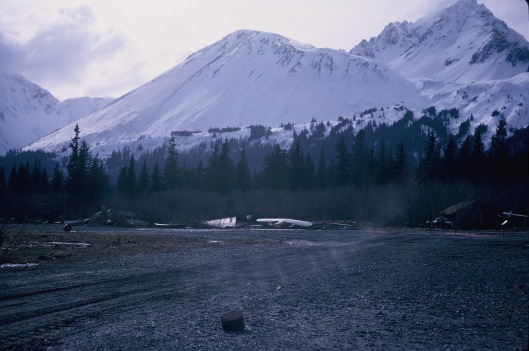
As if the earthquake hadn’t rendered enough damage, a tidal wave had rolled in and crushed everything for about three-quarter of a mile from the bay. The mile‑long waterfront had collapsed into the ocean bay and docks, warehouses, offices, and storage tanks had vanished. Rails, train cars, and engines were melted together or tossed about as if an angry child had tired of play. In a lagoon a half-mile from Seward, two rails dipped up and down with the tide. Wrecked cars, twisted rails, crumbled houses made what had been just crowned an All American City look like a garbage dump. The smoke had so obliterated the town that originally it was reported that the entire city had been wiped out by the quake and ensuing tidal wave.

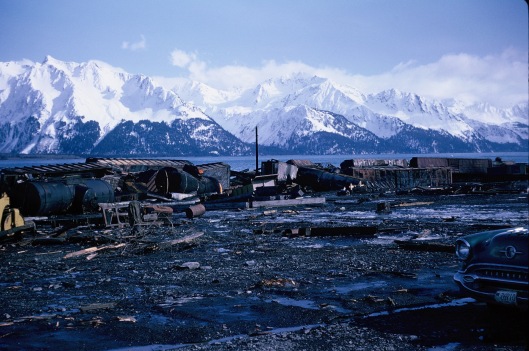
The eerie feeling intensified as we flew south of Seward.
“Didn’t there used to be a mountain peak over there?” asked Paul.
“I thought we knew this area like the back of our hand, but something seems different.” I responded.
“Do you think an entire mountain could be swallowed up?”
I didn’t answer. That concept was too overwhelming. For some time we flew in silence.
After awhile, Paul pointed out the window, “Look! That lake is empty!”
I pushed the stick forward and we flew down for a closer look.
“The bottom must have cracked open and swallowed up the water!” I couldn’t believe what all we were seeing.
xxxxx
In my line of work, death and birth were a part of the circle of life. A week after the history-making phenomena, Mrs. Smith returned and the “Earthquake Baby” didarrive. The child had truly arrived at “breakup” when the Alaskan world broke apart.
xxxxx
Unlike the bridge across the Kenai River, 141 of 204 in Southcentral Alaska were no longer intact.
The Office of Emergency Planning calculated damage to Alaska at approximately $537,600,000, of which around 60 percent was sustained by Anchorage.
104 or more people killed in Anchorage. More than 2,000 people were homeless in Anchorage.






